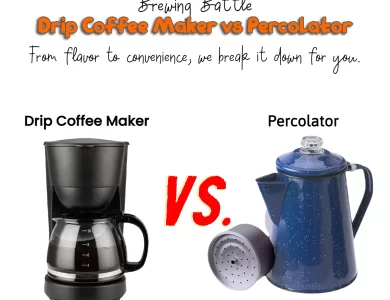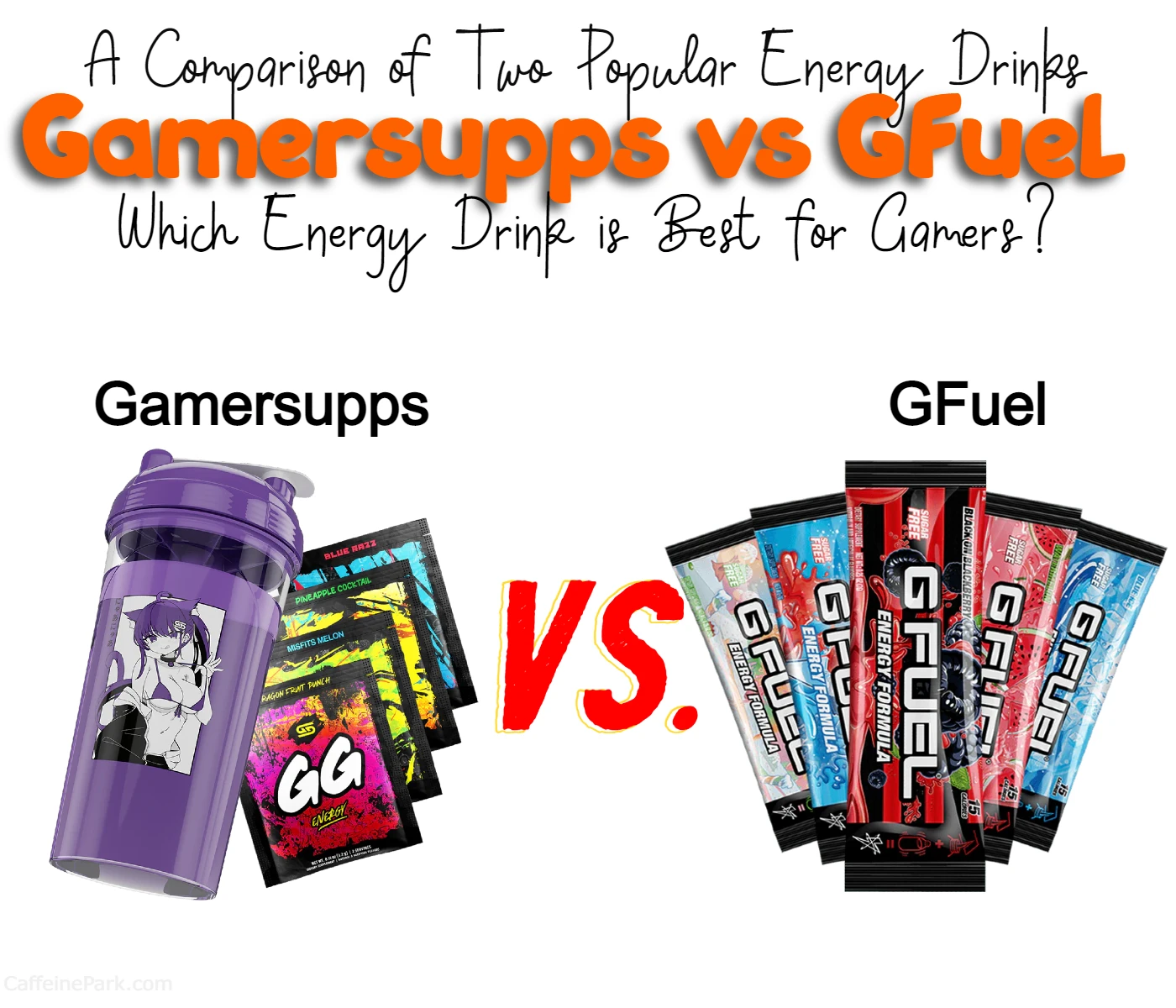
Welcome to my blog! Are you a coffee lover wondering about the difference between coffee and espresso? Look no further! In this blog, we’ll dive into the world of coffee and espresso and explore their differences in taste, strength, and brewing methods. By the end of this article, you’ll have a better understanding of what sets these two beloved beverages apart.
But first, let me ask you a question: are you a coffee or espresso person? Do you prefer the milder, more complex taste of coffee or the concentrated, intense flavor of espresso? Or maybe you enjoy both, depending on the occasion and your mood. Regardless of your preference, it’s important to know the differences between these two popular beverages. Not only will it help you make an informed decision when ordering at a café or making coffee at home, but it will also deepen your appreciation for the nuances of coffee and espresso.
So, whether you’re a coffee novice or an espresso aficionado, grab a cup of your favorite beverage and join me on this journey of discovery. By the end of this blog, you’ll have a newfound appreciation for the unique characteristics of brewed coffee and espresso. So, read on, and let’s explore the world of coffee and espresso together!
Here is a quick comparison chart outlining some of the main differences between coffee and espresso:
| Coffee | Espresso | |
|---|---|---|
| Brewing method | Steeping in hot water | Forcing hot water through finely-ground beans under pressure |
| Flavor | Milder, more complex | Concentrated, intense |
| Caffeine content | Higher per serving | Lower per serving |
| Serving size | Larger | Smaller |
| Crema | No | Yes |
| Ideal for | Sipping throughout day | Quick pick-me-up |
| Common drinks | Drip coffee, pour-over | Espresso shots, lattes, cappuccinos |
Keep in mind that this chart is a generalization and there can be variations in brewing methods, flavors, and caffeine content depending on the type of coffee or espresso you are drinking.
What is Coffee?
Coffee is a beverage made from roasted coffee beans. The beans are ground and then brewed in hot water. There are several ways to brew coffee, including drip coffee, French press, and pour-over. Drip coffee is the most common method in the United States, where coffee is typically served in large mugs or to-go cups.
When you order a cup of coffee, you can typically expect a mug filled with around 8-12 ounces of coffee. The strength of the coffee will depend on the type of roast and the brewing method. Lighter roasts are generally milder in flavor, while darker roasts are more robust and bitter. Some people prefer to add cream or sugar to their coffee to sweeten the taste.
What is Espresso?
Espresso is a concentrated form of coffee that is made by forcing hot water through finely-ground coffee beans. The result is a small, intense shot of coffee with a creamy layer of foam on top called crema. Espresso is typically served in small cups, and it is often enjoyed on its own or as the base for other coffee beverages like cappuccinos and lattes.
Espresso is made using an espresso machine, which uses pressure to extract the coffee from the grounds. The process requires a fine grind of coffee beans and a precise amount of pressure and temperature. A good shot of espresso will have a balanced flavor with notes of chocolate, caramel, and nuts.
How are Coffee and Espresso Different?
Coffee and espresso differ in several ways, including taste, strength, and brewing methods. Here are some of the main differences between the two beverages:
Taste
Coffee and espresso have different flavor profiles due to the brewing method. Coffee is brewed by steeping the beans in hot water, which results in a fuller, more complex flavor. Espresso, on the other hand, is made by forcing hot water through finely-ground coffee beans, resulting in a concentrated and intense flavor.
Caffeine content
One of the most commonly discussed differences between coffee and espresso is their caffeine content. Many people assume that espresso has more caffeine than coffee because of its intense flavor and small serving size, but this is actually a misconception.
In reality, the caffeine content of coffee and espresso varies depending on a number of factors, such as the type of coffee bean, the brewing method, and the serving size. However, as a general rule, a shot of espresso (1 oz) contains about 64mg of caffeine, while an 8-ounce cup of coffee contains 95mg of caffeine.
So, why does espresso have less caffeine than coffee even though it is more concentrated? It all comes down to serving size. A shot of espresso is typically only 1-2 ounces, while a cup of coffee is usually 8-12 ounces or more. This means that even though espresso is more concentrated, you are consuming less of it overall, resulting in less caffeine intake.
Of course, this doesn’t mean that espresso is always a better choice for those looking to limit their caffeine intake. If you’re sensitive to caffeine or trying to cut back, a single shot of espresso may be a better option than a full cup of coffee. But if you’re looking for a bigger energy boost, coffee may be the way to go. Ultimately, the choice between coffee and espresso comes down to personal preference and the occasion.
Strength
Espresso is much stronger than regular coffee due to the concentration of coffee beans used. A typical shot of espresso contains around 75 milligrams of caffeine, while a cup of coffee contains around 100 milligrams of caffeine. However, since espresso is consumed in smaller quantities, it still has less caffeine overall than a typical cup of coffee.
Brewing Method
Coffee and espresso are brewed using different methods. Coffee is typically brewed by steeping the beans in hot water, either by pouring water over the grounds or using a drip coffee maker. Espresso, on the other hand, is made by forcing hot water through finely-ground coffee beans under pressure.
Serving Size
Coffee is typically served in larger quantities than espresso. A typical cup of coffee is around 8-12 ounces, while a shot of espresso is only 1-2 ounces. Espresso is often enjoyed on its own or as the base for other coffee beverages, while coffee is typically served in a mug or to-go cup.
Crema
One of the distinctive features of the espresso is the layer of crema that forms on top of the shot. Crema is a foam-like layer of emulsified oils that gives espresso its signature flavor and texture. Coffee does not have crema since it is brewed using a different method.
Which is Better: Coffee or Espresso?
The answer to this question depends on personal preference. Some people prefer the milder, more complex flavor of coffee, while others prefer the intense, concentrated flavor of espresso. There are also many factors to consider when choosing between coffee and espresso, such as the time of day, the occasion, and the desired effect.
If you’re looking for a quick pick-me-up in the morning or a mid-day energy boost, espresso may be the better choice. Since it is more concentrated than coffee, espresso can provide a quick jolt of caffeine to help you power through your day. Plus, the small serving size makes it easy to consume on the go.
On the other hand, if you’re looking for a more leisurely beverage to savor, coffee may be the better choice. Since coffee is brewed in larger quantities and has a more complex flavor profile, it is better suited for slow sipping and savoring. Coffee is also more versatile than espresso, as it can be brewed in a variety of ways and can be customized with cream, sugar, or flavorings to suit your taste.
Ultimately, the choice between coffee and espresso comes down to personal preference. Both beverages have their own unique flavor profiles, brewing methods, and serving sizes, and both can be enjoyed in a variety of settings and occasions. Whether you’re a coffee lover or an espresso aficionado, there’s no denying that both beverages have a special place in the hearts (and cups) of millions of people around the world.
Conclusion
In summary, coffee and espresso are two of the most popular beverages in the world, and they differ in taste, strength, and brewing method. Coffee is brewed by steeping roasted coffee beans in hot water, while espresso is made by forcing hot water through finely-ground coffee beans under pressure. Coffee is milder and more complex in flavor, while espresso is concentrated and intense. Coffee is typically served in larger quantities, while espresso is served in small shots. Ultimately, the choice between coffee and espresso comes down to personal preference, and both beverages have their own unique characteristics and place in the world of coffee.
FAQs
The main difference between coffee and espresso is in the way they are brewed. Coffee is brewed by steeping roasted coffee beans in hot water, while espresso is made by forcing hot water through finely-ground coffee beans under pressure. This results in coffee being milder and more complex in flavor, while espresso is concentrated and intense.
Although espresso is more concentrated than coffee, it actually contains less caffeine per serving. A shot of espresso typically contains 64mg of caffeine, while an 8-ounce cup of coffee contains 95mg of caffeine.
Technically, you can make espresso with regular coffee beans, but it won’t taste the same as true espresso. To make espresso, you need finely ground coffee beans that are specifically roasted and blended for the espresso brewing process. Regular coffee beans are typically roasted and ground for drip coffee or other brewing methods.
Espresso is traditionally used to make lattes because of its concentrated flavor and texture. However, some people prefer to use brewed coffee instead of espresso in their lattes for a milder flavor. Ultimately, it comes down to personal preference.
Yes, many people enjoy adding milk or cream to their espresso to create a latte or cappuccino. However, it’s important to note that adding milk or cream can alter the taste and texture of the espresso.
Read More:





